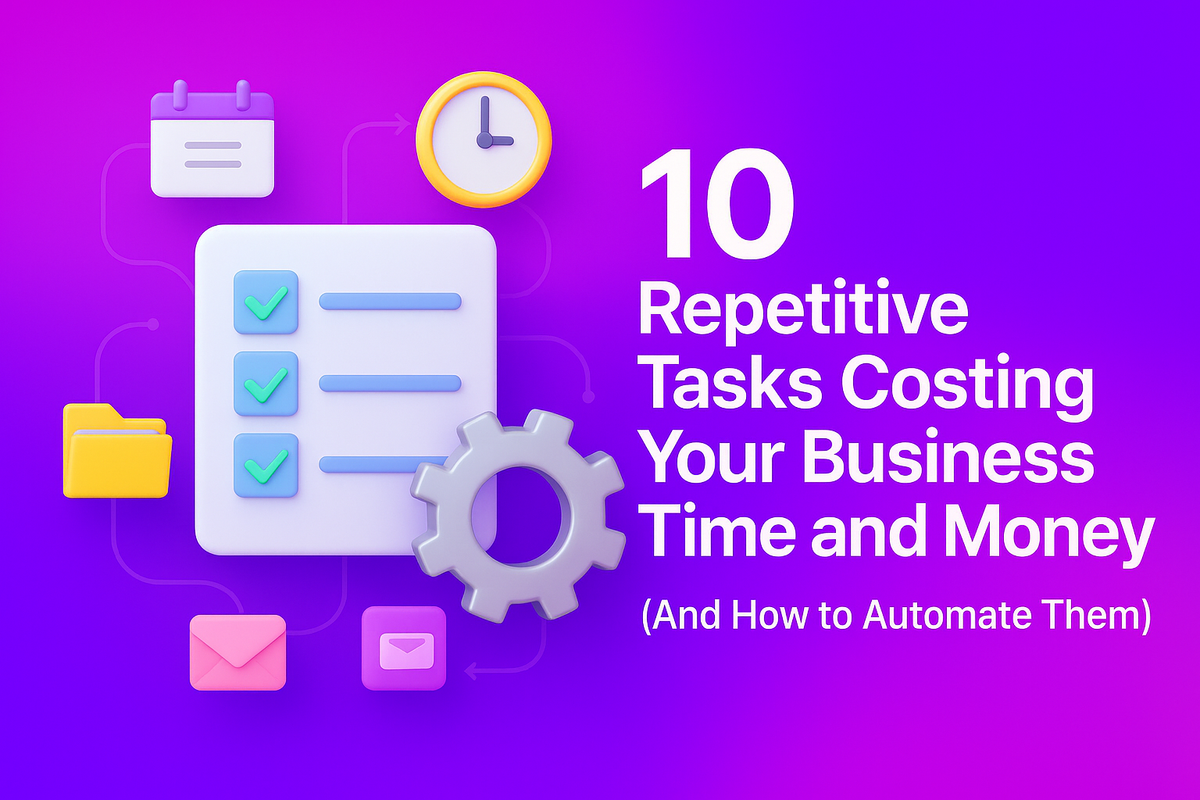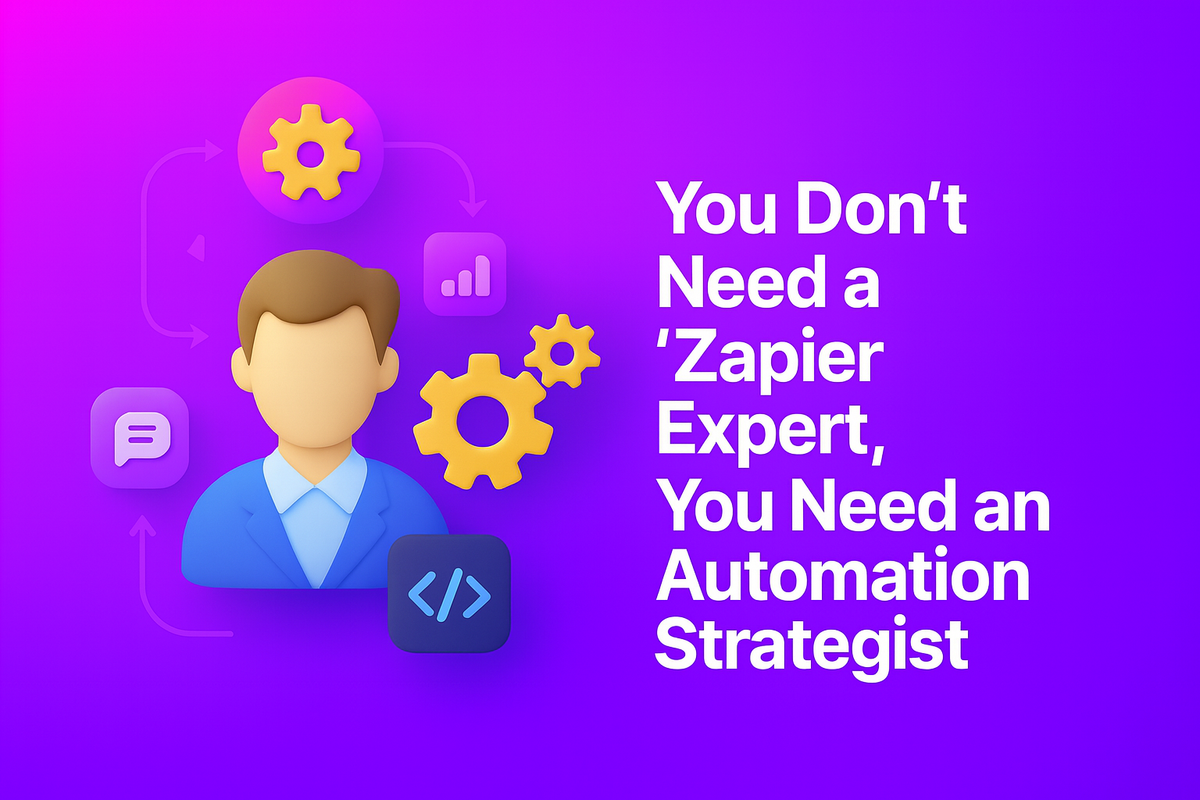
As a business leader in the Netherlands, you pride yourself on being pragmatic and kostenbewust—acutely aware of your costs. You live by the numbers. You scrutinize your P&L statement, you optimize supply chain margins, and you track customer acquisition costs with data-driven precision. But in today's SaaS-driven world, there's a silent killer of profitability that often escapes this rigorous financial scrutiny: the escalating operational expense of your automation tools.
When you first subscribed to a service like Zapier, it was a brilliant decision. For a minor monthly fee, you eliminated hours of manual work. It was a clear win. But as your business has scaled, so has your reliance on it. Your task volume has increased, your workflows have become more complex, and that once-trivial monthly bill is now a significant, recurring operational expense (OpEx).
This brings you to a critical financial crossroads, one that every successful, growing business eventually faces. It marks the transition from scrappy startup thinking to strategic, long-term planning.
💡 The Strategic Question
The question is no longer just "How can we automate this task?" The strategic question is: Do we continue to "rent" a solution with unpredictable, escalating costs, or do we "build" a proprietary automation asset with a one-time capital expense (CapEx) that pays dividends for years?
This guide is for the CFO, the COO, and the growth-minded founder who thinks in terms of ROI and Total Cost of Ownership (TCO). We will provide a practical, numbers-first framework to analyze this decision, determine your financial break-even point, and make a strategic decision that will strengthen your company's foundation and profitability for years to come.
Understanding the Two Cost Models: OpEx vs. CapEx
First, let's break down the true costs associated with each approach. It's more than just the monthly subscription fee.
This high-level comparison already points toward a long-term conclusion, but a true financial analysis requires concrete numbers. Let's build a case study that feels familiar to many growing SMEs.
The Core Analysis: Calculating Your Break-Even Point
Let's create a realistic case study of "Tulip Trends," a growing Dutch e-commerce business that sells specialty tulip bulbs. Their operational complexity is increasing as they grow, and they rely on Zapier to connect their Shopify store, Xero accounting software, and HubSpot CRM.
Step 1: Calculate the Annual Total Cost of Ownership (TCO) of Zapier
The TCO is the holistic, true cost of using the service.
📊 The Formula
Annual TCO = (Monthly Plan Cost × 12) + (Avg. Monthly Overage × 12) + (Internal Staff Hours on Maintenance × Hourly Rate × 52 weeks)
Tulip Trends' Numbers:
- They've upgraded to Zapier's "Professional" plan to handle their multi-step Zaps: €89/month.
- During busy periods, they sometimes exceed their task limit, averaging about €30/month in overages.
- The founder or a key team member, whose time is valued at €50/hour, spends about 3 hours per week on "Zap management." This isn't innovation; it's maintenance:
- 1 hour: Debugging Zaps that failed or produced an unexpected result.
- 1 hour: Manually correcting the data in Xero or HubSpot from those failed runs.
- 1 hour: Researching forum posts and attempting to build new, complex workarounds for Zapier's limitations.
💰 Let's do the math:
- Subscription Cost: €89 × 12 = €1,068
- Overage Cost: €30 × 12 = €360
- Internal Labor Cost: 3 hours/week × €50/hour × 52 weeks = €7,800
Tulip Trends' Annual TCO for Zapier = €9,228
This is the crucial number. The "cheap" €89/month tool is actually costing the business over €760 per month in total resources.
Step 2: Estimate the Cost of a Custom Solution
Now, let's analyze the alternative: a one-time investment in a focused, custom automation project. This doesn't mean replacing every single Zap, but targeting the most complex, high-volume process that causes 80% of the pain.
📊 The Formula
Total Cost = Upfront Development Cost (CapEx) + (Monthly Hosting & Maintenance Fee × 12)
Tulip Trends' Estimate:
After a consultation, an automation agency quotes them a one-time fee of €7,500 for the upfront development. This is a targeted project to build a robust script that flawlessly handles their core "order-to-cash" process. This professional project includes:
- Discovery & Scoping: Mapping the specific order workflow.
- Architectural Design: Designing a lean and efficient system.
- Core Development: Writing clean code for the business logic.
- API Integrations: Building deep connections to Shopify, Xero, and HubSpot.
- Testing & Deployment: Rigorous quality assurance.
- Documentation & Handover: Providing clear documentation.
The solution will run on a secure, lightweight cloud platform with a predictable monthly cost for hosting and maintenance of €40/month.
💰 Let's do the math:
- Upfront Investment: €7,500
- First-Year Hosting/Maintenance: €40 × 12 = €480
Tulip Trends' Year 1 Cost for a Custom Solution = €7,980
Year 2 (and beyond) Cost = €480
Step 3: Find the Break-Even Point and Multi-Year ROI
Here is where the financial picture becomes crystal clear for an SME.
🎯 The Financial Reality
Year 1: The costs are surprisingly close, but the custom solution is already cheaper. Tulip Trends spends €9,228 to "rent" or only €7,980 to "build." The upfront investment is fully paid back by the savings in about 10 months.
Year 2: The comparison becomes dramatic. They can either spend another €9,228 on their Zapier TCO, or just €480 on their custom asset's upkeep.
Annual Savings in Year 2 and Beyond = €8,748
Year 3: The savings continue to compound, freeing up significant capital for growth.
📈 3-Year Cumulative Analysis
- Cumulative 3-Year Cost of Zapier: €9,228 × 3 = €27,684
- Cumulative 3-Year Cost of Custom Solution: €7,980 (Year 1) + €480 (Year 2) + €480 (Year 3) = €8,940
Net Saving Over 3 Years: €18,744
For a growing SME, that €18k is a new marketing campaign, a down payment on new equipment, or a significant bonus for the team.
The Deeper Analysis: Value, Risk, and Opportunity Cost
A sophisticated financial decision weighs more than just the spreadsheet. It assesses strategic value and risk.
1. Value Creation: Building a Sellable Asset
The €7,500 invested in a custom solution isn't an expense; it's a capital investment in intellectual property. This proprietary system increases the operational efficiency and, therefore, the valuation of your business. When you decide to exit, potential acquirers don't just see your revenue; they analyze your operational efficiency. A business that runs on a scalable, proprietary automation engine is inherently more valuable.
2. Risk Mitigation: The "Insurance" of Ownership
Platform Risk: What happens if Zapier changes its pricing, is acquired and changes its service, or deprecates a key integration you rely on? Your business operations are exposed to the decisions of another company. With a custom solution, you own the code. You are in control.
Data Compliance Risk: For any Dutch business handling customer data, GDPR is non-negotiable. Processing EU data on US-based third-party servers can be a complex compliance issue. A custom solution can be hosted in an EU data center (e.g., Amsterdam, Frankfurt), giving you complete data sovereignty and simplifying your compliance burden.
3. Opportunity Cost: The Price of "Good Enough"
The biggest hidden cost is the opportunity cost of workflows that are simply impossible with no-code tools. A custom solution can unlock high-value, strategic automations that can become a true competitive advantage. Imagine:
- An automation that syncs inventory levels from your supplier with your Shopify store in real-time and automatically removes products that are out of stock, preventing customer disappointment.
- A sophisticated lead scoring system that queries past order history to segment new leads for targeted marketing campaigns.
These are not simple tasks; they are complex processes that drive revenue and create a superior customer experience—and they are often out of reach for no-code platforms.
Is It Time for Your Business to Run the Numbers?
This framework isn't just a hypothetical exercise. It's a necessary step for any business that is serious about growth. It's time to conduct this cost-benefit analysis for your company if you meet these criteria:
✅ Self-Assessment Checklist
- ☐ Your monthly Zapier bill consistently exceeds €80-€100.
- ☐ You are using 10,000-20,000+ tasks per month.
- ☐ Your core business operations rely on a complex web of 5 or more critical Zaps.
- ☐ You spend more than 2-3 hours per week maintaining or fixing your existing automations.
- ☐ You are forecasting significant growth in sales or transaction volume in the next 12-18 months.
- ☐ You have ever decided not to build a useful automation because you were worried about the task usage and cost.
If you checked three or more of these boxes, you have likely passed your financial break-even point.
Continuing to rent a temporary solution when your business needs permanent infrastructure is one of the most common, and costly, mistakes a scaling company can make. It's time to shift from short-term operational thinking to long-term value creation.
🤔 Don't Make a Business-Critical Decision on Estimates
The numbers in this guide are illustrative, designed to provide a framework. A truly informed financial decision requires a detailed analysis of your exact workflows, task volume, and growth projections.
We invite you and your financial decision-makers to a free, no-obligation Custom ROI Assessment. In this strategic session, we will go beyond estimates. We'll help you calculate the precise Total Cost of Ownership of your current setup and build a data-driven business case for investing in a scalable, proprietary automation asset for your company.


